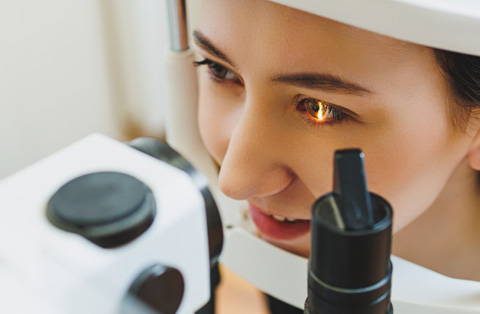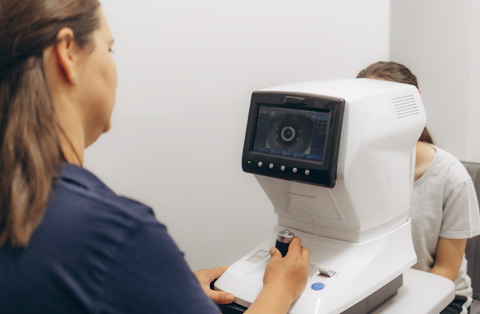Recurrent facial palsy causes repeated facial weakness, impacting daily life. Understanding its causes, diagnosis, and treatment options can help prevent future episodes and improve recovery outcomes.
What is Recurrent Facial Palsy?
Recurrent facial palsy is a condition where facial nerve weakness or paralysis occurs multiple times on the same or opposite side of the face. It affects the facial muscles, leading to temporary or permanent loss of movement. This condition is less common than a single episode of facial palsy, such as Bell’s palsy. It may indicate an underlying health issue, requiring further medical evaluation.
How Does It Differ from Bell's Palsy?
Bell’s palsy is a sudden, one-time episode of facial paralysis, usually resolving within weeks to months. Recurrent facial palsy involves repeated episodes, affecting the same or opposite side. Unlike Bell’s palsy, which is often idiopathic, recurrent cases may be linked to underlying conditions like genetic disorders, infections, or autoimmune diseases. Recurrence suggests a need for further investigation to identify potential causes.
Incidence of recurrence in facial palsy patients
The recurrence rate of facial palsy varies depending on the underlying cause. Studies show that about 4–14% of patients with Bell’s palsy experience recurrence. Recurrence may occur on the same side (ipsilateral) or the opposite side (contralateral). Patients with a family history of Bell’s palsy, diabetes, or multiple episodes are at higher risk. Identifying the cause of recurrent facial palsy is important for proper management and prevention.
What Are the Common Causes of Recurrent Facial Paralysis?
Recurrent facial paralysis can result from various underlying conditions. Unlike a single episode of facial palsy, recurrent cases often indicate a systemic or structural issue. Common causes include:
Bell’s palsy: Some patients experience multiple episodes without a clear cause.
Genetic predisposition: Conditions like Melkersson-Rosenthal syndrome can lead to recurrent facial paralysis.
Infections: Viral infections such as herpes simplex, Lyme disease, or varicella-zoster virus may trigger repeated episodes.
Autoimmune diseases: Conditions like multiple sclerosis or Guillain-Barré syndrome can affect the facial nerve.
Trauma or surgery: Previous facial nerve injury or surgical interventions may lead to recurrent weakness.
Tumors: Growths near the facial nerve, such as acoustic neuromas or parotid gland tumors, may cause intermittent paralysis.
Metabolic disorders: Diabetes and other metabolic conditions can affect nerve function, increasing the risk of recurrence.
Identifying the cause helps guide treatment and reduce the risk of future episodes.
Melkersson-Rosenthal syndrome as a potential cause
Melkersson-Rosenthal syndrome (MRS) is a rare neurological disorder that can cause recurrent facial palsy. It is a chronic condition with an unknown exact cause, though it is believed to have a genetic and inflammatory basis.
Key Features of MRS:
Recurrent facial paralysis: Episodes can affect one or both sides of the face.
Orofacial swelling: Persistent or intermittent swelling, especially in the lips.
Fissured tongue: Deep grooves or cracks on the tongue’s surface.
Not all patients present with all three symptoms, making diagnosis challenging. The condition may worsen over time, leading to permanent facial weakness. Treatment focuses on managing symptoms, often with corticosteroids or other anti-inflammatory medications.
Ramsay Hunt syndrome and recurrent facial palsy
Ramsay Hunt syndrome (RHS) is caused by the varicella-zoster virus (VZV), which also causes chickenpox and shingles. It occurs when the virus reactivates in the geniculate ganglion of the facial nerve, leading to facial paralysis and ear symptoms.
RHS and Recurrent Facial Palsy:
Reactivation risk: The virus can reactivate multiple times, increasing the chance of recurrence.
Incomplete recovery: Patients who do not fully regain facial nerve function may be prone to future episodes.
Weakened immunity: Conditions like diabetes or immunosuppression increase recurrence risk.
Unlike Bell’s palsy, RHS is often more severe and has a lower chance of full recovery. Early antiviral and corticosteroid treatment can improve outcomes and reduce recurrence risk.
How Is Recurrent Facial Palsy Diagnosed?
Diagnosing recurrent facial palsy involves identifying the underlying cause through a detailed medical evaluation. Since recurrence suggests a possible systemic or structural issue, a thorough assessment is necessary.
Diagnostic Steps:
Medical History – Previous episodes, family history, underlying conditions, infections, or triggers.
Physical Examination – Facial nerve function, associated symptoms like swelling, pain, or ear involvement.
Blood Tests – Check for infections (HSV, VZV, Lyme disease), autoimmune markers, and metabolic disorders (diabetes).
Imaging Tests – MRI or CT scan to rule out tumors, structural abnormalities, or multiple sclerosis.
Electrophysiological Tests – Electroneurography (ENoG) or electromyography (EMG) to assess nerve function.
Lumbar Puncture (if needed) – In suspected cases of neurological conditions like Guillain-Barré syndrome.
A correct diagnosis helps guide appropriate treatment and prevent future episodes.
Facial nerve grading systems for diagnosis
Facial nerve grading systems help assess the severity of facial palsy and track recovery. The most commonly used systems include:
1. House-Brackmann (HB) Grading System
The most widely used scale, ranging from Grade I (normal function) to Grade VI (complete paralysis):
Grade I – Normal facial function.
Grade II – Mild dysfunction (slight weakness, normal symmetry at rest).
Grade III – Moderate dysfunction (obvious weakness, but able to close eye).
Grade IV – Moderately severe dysfunction (unable to close eye completely).
Grade V – Severe dysfunction (barely any movement, asymmetry at rest).
Grade VI – Total paralysis (no movement at all).
2. Sunnybrook Facial Grading System (SFGS)
A more detailed 100-point scale evaluating:
Resting facial symmetry.
Voluntary facial movements.
Synkinesis (abnormal involuntary movements).
3. Facial Nerve Grading Scale 2.0 (FNGS-2.0)
A modified version of the House-Brackmann system with more objective scoring based on specific facial movements.
These grading systems help clinicians monitor progress, compare treatment outcomes, and determine prognosis.
What Treatment Options Are Available for Patients with Recurrent Facial Palsy?
Treatment for recurrent facial palsy depends on the underlying cause, severity, and frequency of episodes. The goal is to restore facial nerve function, prevent further recurrences, and manage complications.
Medical Treatments:
Corticosteroids – Reduce inflammation and swelling of the facial nerve (best if started early).
Antiviral Medications – Used for suspected viral causes (e.g., acyclovir or valacyclovir for herpes simplex or varicella-zoster virus).
Immunosuppressive Therapy – For autoimmune-related facial palsy (e.g., multiple sclerosis or Guillain-Barré syndrome).
Botulinum Toxin (Botox) – Helps manage synkinesis (abnormal muscle movements) and facial asymmetry.
Physical and Supportive Therapy:
Facial Exercises – Improve muscle strength and coordination.
Neuromuscular Retraining – Helps patients regain voluntary control of facial movements.
Electrical Stimulation – May assist in muscle activation during recovery.
Eye Care – Lubricating drops or taping the eyelid at night if blinking is impaired.
Surgical Options:
Facial Nerve Decompression – Considered in cases of nerve compression.
Selective Neurectomy – For severe synkinesis or abnormal muscle contractions.
Facial Reanimation Surgery – Includes nerve grafts or muscle transfers for long-term paralysis.
Early diagnosis and treatment improve recovery chances. Long-term management depends on the recurrence pattern and underlying cause.
What Is the Prognosis for Patients with Recurrent Facial Palsy?
The prognosis for recurrent facial palsy depends on the underlying cause, severity of episodes, and response to treatment. Most patients experience some degree of recovery, but repeated episodes may lead to complications.
Factors Affecting Prognosis:
Cause of Palsy – Idiopathic cases (like recurrent Bell’s palsy) generally have a better prognosis than those linked to autoimmune diseases, tumors, or infections.
Frequency of Recurrence – Multiple episodes increase the risk of incomplete recovery and long-term nerve damage.
Treatment Timing – Early use of corticosteroids and antivirals can improve outcomes.
Severity of Each Episode – More severe paralysis has a higher chance of residual weakness or synkinesis (abnormal involuntary movements).
Possible Long-Term Outcomes:
Complete Recovery – Many patients regain full function, especially with early treatment.
Residual Weakness – Some experience mild to moderate permanent facial asymmetry or weakness.
Synkinesis – Abnormal facial movements during voluntary actions, often seen after multiple episodes.
Chronic Pain or Discomfort – Some patients develop facial tightness, spasms, or discomfort over time.
Regular follow-ups and rehabilitation therapy help improve function and quality of life for patients with recurrent facial palsy.






